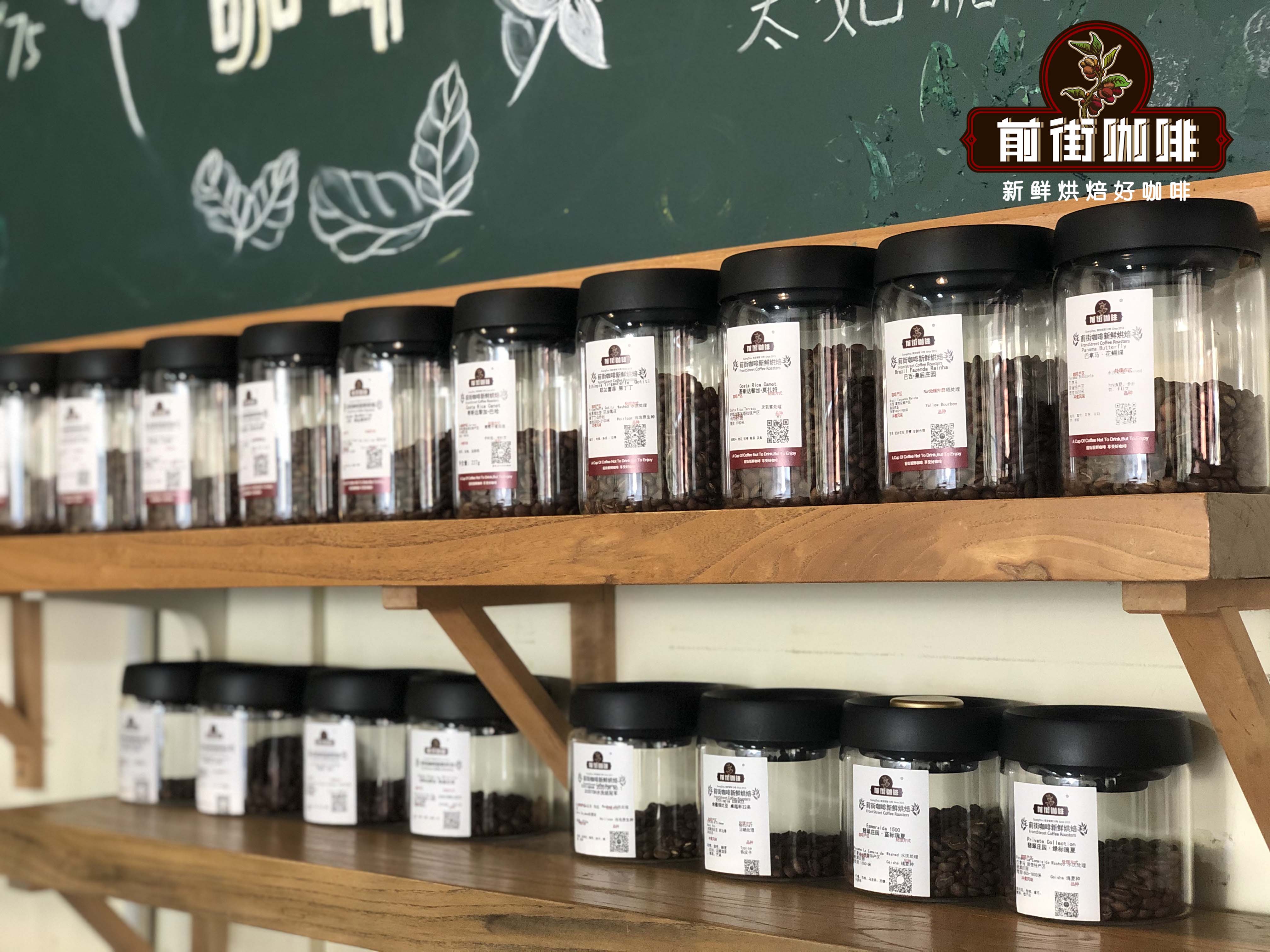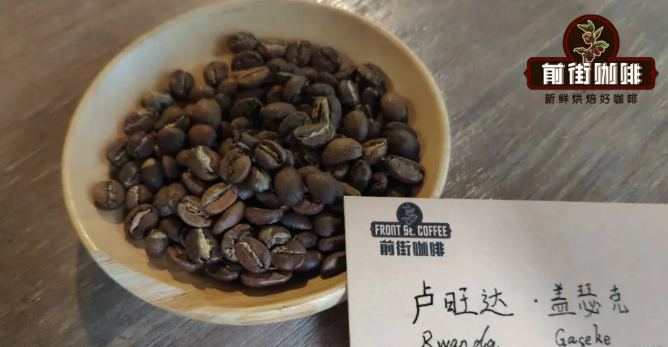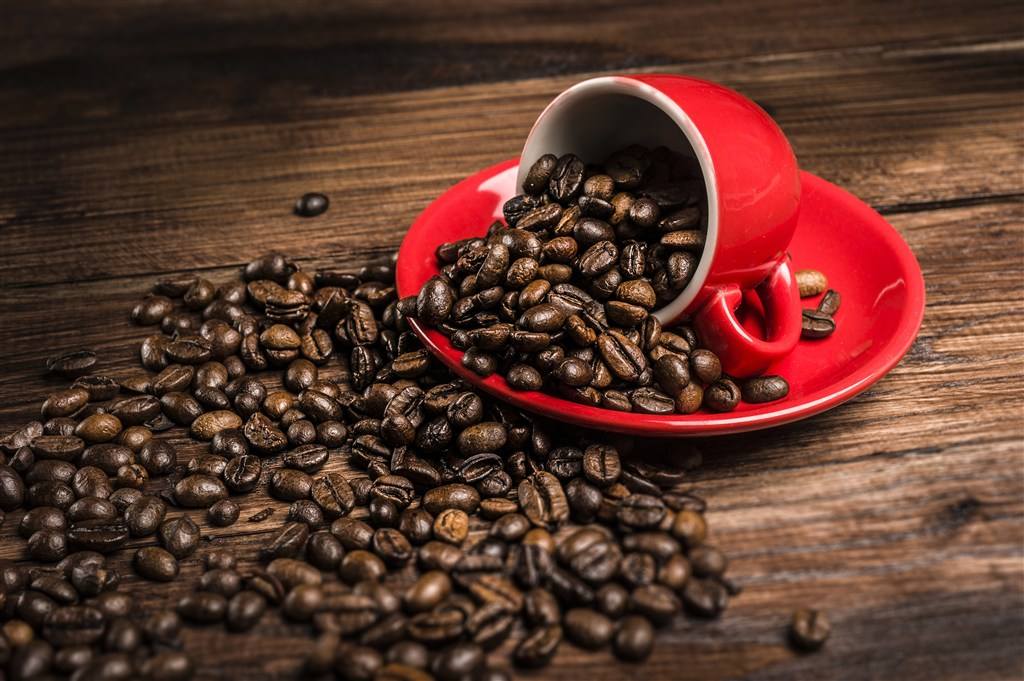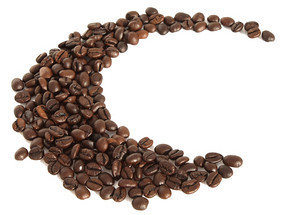Story characteristics of Rwanda Coffee Bean producing area Gesak bourbon Coffee Bean Flavor

Professional coffee knowledge exchange More coffee bean information Please pay attention to coffee workshop (Weixin Official Accounts cafe_style)
Africa's famous coffee producing areas include not only Ethiopia and Kenya, but also Rwanda, the winning general in the coe Excellence Cup Coffee Competition in recent years, and Rwanda's entry into the fine coffee market is only in a few decades. Then this article will popularize the characteristics of Rwanda's coffee producing areas.
Rwanda coffee production characteristics
Rwanda has many mountains and plateaus throughout its territory, so it has always been known as the "country of thousands of hills". Most of Rwanda has a tropical plateau climate and a savanna climate, and has fertile volcanic soil. The climate is suitable. Therefore, Rwanda has unique conditions for growing Arabica coffee beans, which also sets the tone for the high quality flavor of Rwandan coffee beans.

Rwanda accounts for more than 70% of the country's total export trade in coffee exports alone. Rwanda has about 33,000 hectares of coffee plantations and 500,000 people are engaged in coffee cultivation; mainly smallholder production, and coffee trees grown in Rwanda basically do not use chemical fertilizers or pesticides. The fertilizer in the soil is mainly from the natural mulch on the ground, as well as traditional fertilization methods, which also creates a pure natural high-quality coffee fruit.
History of coffee cultivation in Rwanda
As mentioned above, Rwandan coffee has not been a fine coffee for a long time. Rwanda is located in the central part of Africa and is a standard landlocked country. It has been colonized by Germany and Belgium successively. Coffee was also introduced into Rwanda by German missionaries during colonization.
During the colonial period, coffee production was mainly supplied to Belgium, the main country at that time. Therefore, Rwanda's coffee production was huge at that time. However, under the condition that this labor force was exploited, Rwanda's coffee quality at that time was absolutely not guaranteed. Therefore, Rwanda's coffee production at that time was only output but not quality, and it could not be called fine coffee.
It was not until Rwanda became independent that the first official coffee organization, OCIR, began to pay attention to coffee bean production. As a result, Rwanda's coffee production continued to grow from the 1960s to 1980s, reaching an unprecedented peak in 1986.
However, in the early 1990s, Rwanda's internal political instability (Rwandan genocide) forced the coffee industry to stagnate. It was not until 2001, after Rwanda's political stability, that the government established NAEB (National Agriculture Export Development Board) to focus on increasing coffee exports and earning foreign exchange. This is one of the reasons why rwandan coffee beans have repeatedly won the coe coffee competition in recent years.
In 2017, NAEB and the Japan International Cooperation Agency (JICA) jointly launched a three-year technical program,"Coffee Upgrading and Promotion in Rwanda (CUP Rwanda)." The project aims to improve the quality of coffee farmers 'cultivation practices and processing. And it's enough to show that Rwanda has put a lot of effort into the quality of coffee.

Rwandan coffee bean varieties
More than 97 per cent of coffee grown in Rwanda is Arabica, of which about 95 per cent is bourbon. Therefore, bourbon, kadura and kaduai can often be seen in Rwandan coffee varieties, and the flavor performance of these three front street coffee is considered to be relatively close to the wave collateral flavor tone, so Rwandan coffee beans in the coffee flavor performance often have citrus, nut flavor.
Bourbon varieties:
More than 90% of Rwandan coffee varieties are early introduced bourbon varieties, as well as bourbon family hybrids, which are resistant to natural disasters. Bourbon coffee was originally planted in Reunion Island, introduced in Brazil in 1860, and quickly spread north to the whole of Latin America, Bourbon general coffee tree flowering, coffee fruit color change is from: green> turn slightly yellow> turn slightly orange> turn mature red> turn more mature dark red, so it is also called "red Bourbon species", in fact, red Bourbon, that is, generally we call Bourbon species. Bourbon species grown at higher altitudes usually have better aromas and brighter acids.

For example, several Latin American bourbon coffee beans currently imported by Front Street Coffee include Brazilian red bourbon, Brazilian yellow bourbon and Colombia pink bourbon. But now Latin America's bourbon dominance is gone because of poor disease resistance. In contrast, Rwandan bourbons still enjoy an advantage, which is one reason Front Street Coffee picks Rwandan beans.
Kadura varieties:
Kadura is a natural variety of the arabica variety bourbon, discovered in brazil in 1937. Its tree is not as tall as bourbon, but shorter. Due to the inheritance of bourbon pedigree, so relatively weak resistance, but production is higher than bourbon.
Kaduai varieties:
Kaduai varieties are coffee varieties artificially crossed between Kadura varieties and New World varieties of coffee trees. Kaduai has a relatively good ability to resist natural disasters, especially wind and rain. Kaduai trees are relatively low, and compared to other coffee trees, kaduai fruits grow stronger and are difficult to pick. The fruit is red and yellow. According to Qianjie practice brewing coffee concluded that although some yellow fruit processing coffee although the acidity is good, but the coffee taste cleaner than red fruit is worse.
Rwandan coffee bean processing

At present, Rwandan coffee beans are mainly washed. Every year during harvest, farmers gather ripe coffee fruit for processing in washing plants. And hand-picked to ensure that no immature or damaged fruit mixed. Previous articles on Front Street have often said that washing is the best way to reflect the original flavor of a coffee bean, and it is also cleaner and brighter in flavor performance, so this is one of the reasons why Front Street Coffee introduced Rwandan coffee.
Water washing process flow:
1. Pour the coffee berries into water and float to remove defective beans, such as immature, overripe, or impurities.
2. Remove the exocarp and pulp of the screened coffee fruit with a peeling machine. The surface of the coffee fruit with the peel and pulp removed is still adhered with a layer of pectin, so it is necessary to remove the pectin on the surface of the coffee fruit by a large amount of water.
3. The process of removing pectin by fermentation takes about 18 hours, because after fermentation is completed, fermentation bacteria still adhere to the surface of coffee fruit, so it is necessary to wash with a large amount of water again, like this step, to get 1 kg of coffee beans need to consume 40 to 50 kg of water, front street thinks this is a very large number, so, this also limits the reason why some areas cannot be washed.
4. Clean coffee beans can be dried, some areas will be taken directly to the outdoor drying, if there is equipment, some processing plants will use a machine drying, so that the coffee moisture content reduced to about 11%. The endocarp and silver skin can be removed with a hulling machine.
According to Qianjie, in just over 20 years of coffee development in Rwanda, the number of washing stations has increased from 2 to 220. It is now wholly privately owned, i.e. by exporters or farmers 'cooperatives. Due to the small average size of farmland (less than 200 coffee trees per farm), each station serves approximately 50 to 100 farms. NAEB employs 200 botanists and surveyors who regularly visit the washing stations to inspect quality and educate farmers on soil management, organic farming, pruning, pest control and picking.
Therefore, this is one of the reasons why Front Street Coffee chose to introduce Rwandan coffee to coffee fans. Next, Front Street recommends the following Rwandan Gesek coffee beans to coffee fans and shares the roasting and brewing data.
Front Street Coffee Gesek Coffee Bean

Country: Rwanda
Region: Nyamasheke district, western Rwanda
Altitude: 1700-200m
Breeds: Bourbon, Kadura, Kaduai
Treatment method: washing treatment
Flavor: Plum, citrus, berry, nutty, bright acid, honey sweet finish.
Front Street Coffee Roasting Advice
Due to the fresh acidity of Rwandan coffee beans, Front Street Coffee recommends a medium light roast to accentuate this flavor. The deeper you bake, the more tonality you lose. Yangjia 800N bean 550g: furnace temperature 175℃ into the pot, fire 120, damper open 3; return temperature point 136 ", furnace temperature 112℃ when the damper open to 4, fire up to 140;
When the oven temperature is 151℃, the bean surface turns yellow, the grass flavor disappears completely, and enters the dehydration stage; when 8 30", the bean surface appears ugly beard wrinkles and black stripes, and the toast flavor obviously turns into coffee fragrance, which can be defined as the prelude of one explosion. At this time, we should clearly hear the sound of one explosion point, and start one explosion at 9 45". The damper is opened to 5. After one explosion, the development of 1 '30' is carried out. The pot is placed at 190.6℃.

Front Street Coffee Brewing Experience
Filter bowl V60
Water temperature 90℃
Powder 15 g
Powder water ratio 1:15
Grindability BG #6m (80% pass rate of Chinese standard No.20 sieve)

in that first stage, 30 gram of water is use for stewing for 30 seconds; in the second stage, small water flow circles and inject water to 125 grams; when the water level drops, the powder bed is about to be exposed; in the third stage, the water injection is stopped until 225 grams; when the water level drops, the powder bed is about to be exposed; and the filter cup is removed, and the total extraction time is 2 minutes. Conical v60 filter cup increases coffee level, 1:15 powder/water ratio increases coffee alcohol and sugar, staged water injection makes coffee extraction time not too short, and can be adjusted according to the front, middle and rear stages.
Rwanda's brewing flavor has obvious fruit acids, nuts, overall balance and smoothness, although the berry flavor is not as prominent as Kenya, but Front Street believes that Rwanda, as a coffee producing country that has only come to the top in the past 20 years, has room for improvement, so Front Street believes that more fine coffee from Rwanda will enter the country in the near future.
More fine coffee beans, please add private WeChat Qianjie Coffee, WeChat: kaixinguoguo0925
Important Notice :
前街咖啡 FrontStreet Coffee has moved to new addredd:
FrontStreet Coffee Address: 315,Donghua East Road,GuangZhou
Tel:020 38364473
- Prev

Rwanda has unique conditions for growing Arabica coffee.
Follow the caf é (official Wechat account vdailycom) and find that Rwanda is the only country in the world that can fully enjoy the harmony between soil, altitude and climate. Rwanda has unique conditions for growing Arabica coffee, fertile volcanic soil, adequate rainfall and suitable temperature all year round.
- Next

Rwanda Bourbon Coffee Bean Flavor Description
Pay attention to coffee reviews (Weixin Official Accounts vdailycom ) and find a good cafe to open your own shop [name]: Rwanda Bourbon Specialty [quality rating]: AA [roasting degree]: City Roast or Full City Roast [grade]: Good [particles]: ★★ full
Related
- Detailed explanation of Jadeite planting Land in Panamanian Jadeite Manor introduction to the grading system of Jadeite competitive bidding, Red bid, Green bid and Rose Summer
- Story of Coffee planting in Brenka region of Costa Rica Stonehenge Manor anaerobic heavy honey treatment of flavor mouth
- What's on the barrel of Blue Mountain Coffee beans?
- Can American coffee also pull flowers? How to use hot American style to pull out a good-looking pattern?
- Can you make a cold extract with coffee beans? What is the right proportion for cold-extracted coffee formula?
- Indonesian PWN Gold Mandrine Coffee Origin Features Flavor How to Chong? Mandolin coffee is American.
- A brief introduction to the flavor characteristics of Brazilian yellow bourbon coffee beans
- What is the effect of different water quality on the flavor of cold-extracted coffee? What kind of water is best for brewing coffee?
- Why do you think of Rose Summer whenever you mention Panamanian coffee?
- Introduction to the characteristics of authentic blue mountain coffee bean producing areas? What is the CIB Coffee Authority in Jamaica?

